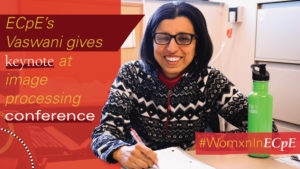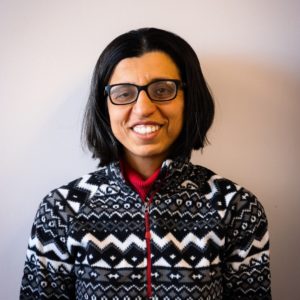
On Dec. 22, 2019, Anderlik Professor Namrata Vaswani in Electrical and Computer Engineering at Iowa State University attended the seventh national conference on computer vision, pattern recognition, image processing and graphics (NCVPRIPG 2019) as a keynote speaker. The conference was held at Hubballi, Karnataka, India.
Vaswani was one of six keynote speakers at NCVPRIPG. She spoke about Principal Components Analysis (PCA), also known as subspace learning, one of the most widely used noise removal and dimension reduction techniques. Vaswani’s talk discussed the work she is doing on two problems involving subspace learning from “bad” data. “Bad” data can mean many things — but in this situation, it was defined as a “nonlinear function of the true data, or it has missing entries, and/or it is corrupted by outliers.”
“A lot of data generated today is “bad,” Vaswani said. “The data can be incomplete, it can have outliers, it may be undersampled deliberately to speed up data acquisition or it may be a nonlinear, e.g., a magnitude-only, function of the ‘signal’ (quantity of interest). This happens in many computational imaging applications such as Fourier ptychography, as well as in X-ray crystallography, and astronomical imaging where the phase/sign of the acquired data is either difficult or impossible to obtain.”
While Vaswani gave her own presentation over her research, she also had the opportunity to learn about research from the five other keynote speakers.
“It was exciting to meet and learn from computer vision and imaging colleagues from India around the world, and especially Andrew Zisserman of Oxford,” Vaswani said.
Andrew Zisserman, from the University of Oxford, spoke over the concept of computer vision, particularly understanding human actions and activities from videos. Vaswani and Zisserman spoke on the same day, Zisserman in the morning and Vaswani in the afternoon. The keynote speakers never had overlapping presentations, giving the six scientists the opportunity to attend all presentations.